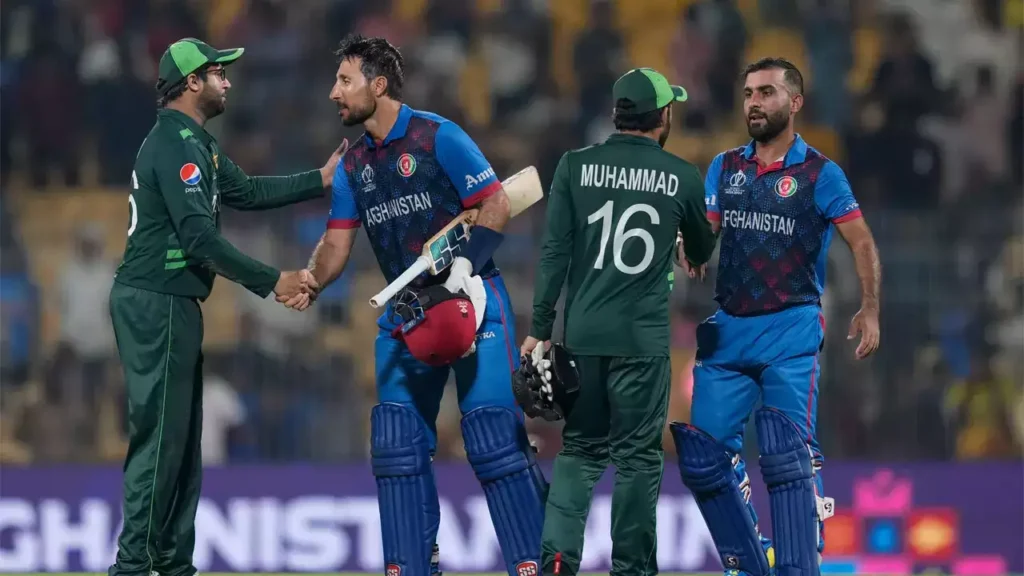In this comparative analysis, we will explore the cricketing dynamics between two South Asian rivals, Pakistan and Afghanistan. Although Pakistan has a long-standing tradition and history in international cricket, Afghanistan’s recent rise has been a thrilling story in the sport’s landscape. We will compare these two teams across various dimensions including historical achievements, player statistics, head-to-head records, and contributions to the sport.
1. Overview of Cricket in Pakistan and Afghanistan
Pakistan
Cricket in Pakistan dates back to 1952 when they played their first test match. Over the decades, Pakistan has emerged as a cricket powerhouse, notable for producing world-class fast bowlers and talented batsmen. Their cricketing infrastructure is mature, with several domestic tournaments that nurture young talent.

Afghanistan
Afghanistan’s cricket story is newer but no less fascinating. The national team was formed in 2001, and within a decade, they climbed the ranks of international cricket, gaining ODI status in 2009 and full ICC membership in 2017. Despite less developed infrastructure, their rapid rise is a testament to the talent and passion for the game among Afghans.
2. Historical Achievements
| Achievements | Pakistan | Afghanistan |
|---|---|---|
| World Cup Wins | 1992 | None |
| Asia Cup Wins | 2000, 2012 | None |
| ICC World Rankings | Consistently in top 10 | Rapidly improving, now in top 10 |
Major Tournaments and Wins
Pakistan’s cricket history is decorated with significant achievements including a World Cup win in 1992. They have been a dominant force in Asian cricket, with multiple Asia Cup victories.
Afghanistan, while newer to the scene, has shown promising performances in world cups and Asian games, often causing upsets against more established teams.
3. Key Players and Influential Figures
Pakistan
- Imran Khan: Legendary all-rounder, led Pakistan to their 1992 World Cup win.
- Wasim Akram: One of the greatest fast bowlers of all time.
- Inzamam-ul-Haq: A prolific batsman.
Afghanistan
- Rashid Khan: World-class spinner, making significant impacts in international T20 leagues.
- Mohammad Nabi: All-rounder who has been crucial in Afghanistan’s rise in international cricket.
4. Head-to-Head Record
Overview of Matches
Pakistan and Afghanistan have faced each other in limited ODI and T20 matches, with Pakistan generally having the upper hand. However, each match between the two is highly anticipated due to their growing rivalry.
| Match Type | Matches Played | Pakistan Wins | Afghanistan Wins | No Result |
|---|---|---|---|---|
| ODI | 5 | 4 | 1 | 0 |
| T20 | 3 | 3 | 0 | 0 |
Significant Matches
- Asia Cup 2018: Afghanistan nearly upset Pakistan, showcasing their growing capabilities.
5. Development and Support Structures
Pakistan
Cricket is deeply rooted in Pakistan’s culture, supported by a structured domestic league system including the Pakistan Super League (PSL), which attracts international talent and promotes local players.
Afghanistan
Afghanistan’s cricket infrastructure is developing, with the Afghanistan Premier League launched in 2018. They also benefit significantly from training camps in Pakistan and India.
6. Fan Base and Cultural Impact
Cultural Significance
In both countries, cricket is more than just a sport; it is a vital part of national identity and pride. For Pakistan, cricket has been a unifying force amid various internal challenges. Afghanistan sees cricket as a beacon of hope and normalcy in times of turmoil.
Youth Involvement
Both nations have a youthful population where cricket acts as a significant engagement and entertainment source, inspiring future generations to take up the sport.
Conclusion
The comparison between Pakistan and Afghanistan in cricket is not just about scores and statistics; it’s about the impact of cricket on national identity, the passion it inspires among the youth, and the cultural significance it holds. As Afghanistan continues to develop its cricketing capabilities, the rivalry with Pakistan is likely to become even more competitive and exciting.